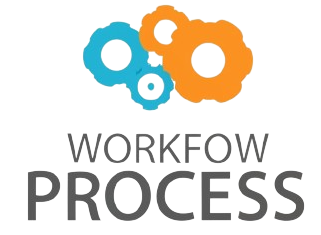The intersection of agentic AI and regulatory compliance represents a critical frontier in technology and law. Agentic AI refers to artificial intelligence systems that can make decisions independently and take actions toward achieving specific goals. As these AI systems become more autonomous, organizations and regulators face complex challenges to ensure that their deployment aligns with existing legal frameworks and ethical standards. Balancing innovation with responsibility requires understanding not only the capabilities of agentic AI but also the implications for regulatory compliance across industries. This article explores how agentic AI intersects with compliance requirements, the risks and safeguards necessary to manage these systems, and the evolving landscape of regulations shaping their responsible use.
Understanding agentic AI and its autonomous capabilities
Agentic AI systems differ significantly from traditional AI tools due to their ability to act independently without constant human oversight. They process data, make decisions, and execute tasks with a degree of purposive behavior. Examples include autonomous financial advisors, AI-driven supply chain managers, and automated legal assistants. The autonomy of agentic AI raises questions about accountability and transparency, especially since their decision-making processes can be complex and opaque.
Because these systems can self-direct, they introduce new compliance challenges. Organizations must ensure these AI entities act within legal boundaries, respect data privacy, and do not engage in harmful discrimination or fraud. This requires not only monitoring outputs but also understanding internal algorithms and decision pathways, which are often proprietary and inscrutable.
Regulatory frameworks addressing agentic AI
Regulators worldwide are increasingly focused on AI governance, crafting laws and guidelines that address the unique challenges posed by agentic AI. Major regulatory frameworks touch on transparency, fairness, accountability, and safety.
Key examples include:
- EU AI Act: Proposes stringent requirements for high-risk AI systems, emphasizing risk management and human oversight.
- US Algorithmic Accountability Act: Demands impact assessments and mitigation of bias for automated decision systems.
- Data protection laws: Such as GDPR, which regulate how AI can process personal data, stressing the need for lawful, fair processing.
Each framework targets different aspects of agentic AI, but all share a common goal: ensuring AI applications operate within ethical and legal boundaries to protect individuals and society.
Challenges in maintaining compliance with autonomous AI
Ensuring compliance with regulations when deploying agentic AI presents several challenges:
- Opacity of decision-making: Agentic AI models, especially those based on deep learning, often function as “black boxes,” making it hard to explain decisions.
- Dynamic adaptation: Autonomous systems that learn and evolve over time may inadvertently breach compliance if their updated behaviors haven’t been reassessed.
- Cross-border complexities: AI applications operating internationally must comply with multiple jurisdictions, which may have conflicting regulations.
- Accountability gaps: Determining who is responsible for AI-driven decisions—developers, companies, or AI itself—remains a legal grey area.
Addressing these requires robust governance frameworks and proactive regulatory dialogue.
Implementing safeguards to ensure agentic AI compliance
To mitigate risks and meet regulatory demands, organizations can deploy multiple layers of safeguards:
- Explainable AI (XAI): Techniques that make AI decisions interpretable to humans help satisfy transparency requirements.
- Continuous monitoring: Systems should be regularly audited to detect deviations and potential compliance failures.
- Ethical design principles: Embedding fairness, privacy, and accountability from the development stage promotes compliant outcomes.
- Compliance automation: Leveraging AI tools to monitor other AI systems can enable real-time oversight and rapid response.
These strategies collectively help align autonomous AI with evolving regulatory expectations and reduce risks of costly violations.
Future trends in agentic AI regulation and integration
As agentic AI technologies mature, regulatory approaches are expected to evolve in the following ways:
| Trend | Description | Impact |
|---|---|---|
| Adaptive regulation | Dynamic laws that adjust as AI capabilities develop | Ensures relevant compliance without stifling innovation |
| Standardization of audits | Unified frameworks for independent AI evaluations | Streamlines compliance checks across industries and borders |
| Greater international cooperation | Cross-border agreements on AI liability and ethics | Reduces conflicts and facilitates global AI adoption |
Future regulation will likely be more collaborative and technology-informed, bridging gaps between legal norms and agentic AI’s autonomous nature.
In conclusion, the intersection of agentic AI and regulatory compliance demands a comprehensive approach balancing innovation with responsibility. Agentic AI’s autonomous decision-making capabilities challenge traditional compliance models, necessitating new regulatory frameworks emphasizing transparency, fairness, and accountability. Organizations face difficulties such as opaque algorithms and jurisdictional challenges but can mitigate these through explainable AI, continuous monitoring, and ethical design. Looking ahead, evolving regulations will become more adaptive and internationally coordinated to effectively govern autonomous AI systems. Staying informed and proactive in compliance strategies will be essential for organizations leveraging agentic AI to flourish in a rapidly changing legal landscape.
